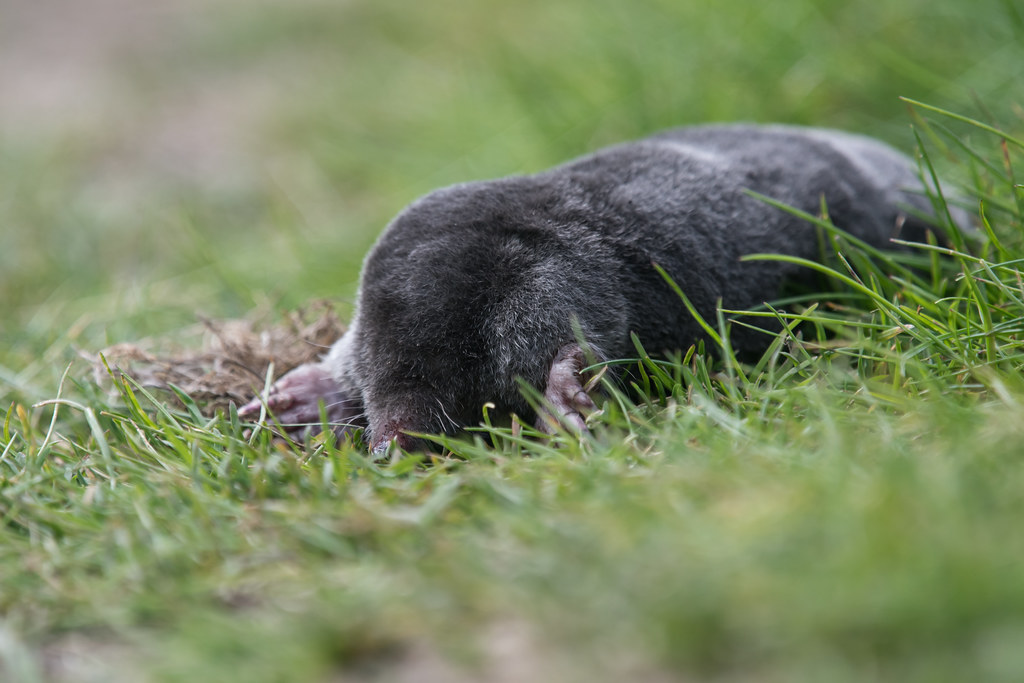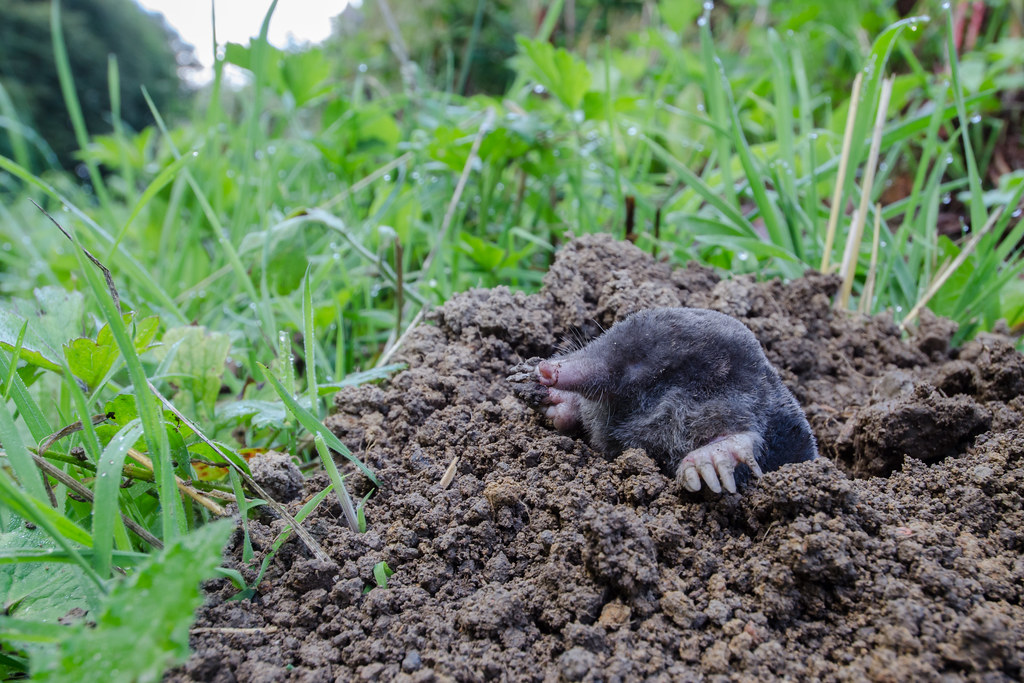
Tim writes: “To the gentleman in the velvet waistcoat” was apparently a popular Jacobite toast. It refers to the mole that raised the hill at Hampton Court upon which the horse of William III (William of Orange) stumbled which subsequently led to his death. He broke his collarbone but he became ill when complications arose, and he subsequently died in 1702. The velvet waistcoat refers to the unusual pelage of moles that rises vertically. Most mammals have fur that grows in one direction, which is why you stroke a dog from front to back. But moles have no lie as their fur just rises vertically like velvet, which allows them to move forwards and backwards in a narrow tunnel with equal ease.
Moles spend most of their lives underground and rarely appear above ground. But baby Moles are born in June and stay in the mother’s tunnel for about five weeks when they are ejected. This is why most mole sightings above ground are from mid July to August. Most mole hills appear without any sign of a mole above ground but when young leave the mother’s tunnel they do emerge, leaving molehills with a characteristic hole in the middle. The young then disperse above ground and establish a tunnel of their own. They live a solitary life in their tunnels, but males burrow through the earth to find female tunnels during April and May, but once he’s mated he returns to his own tunnel. They feed almost entirely on earthworms and insect larvae (especially leatherjackets) but when they are on the surface they occasionally eat slugs and snails.
I was always very dubious about photographs of Moles appearing out of molehills and I suspected they were staged with a dead Mole. But a couple of years ago I saw a young mole scampering across the grass next to a molehill with a hole in it. When I looked closely I saw a Mole in the hole so I waited quietly until the second young Mole appeared. And here it is:

What a fantastic picture.
You can almost sense his or her feeling of anticipation.
Mole control is still widely practised in my county and no doubt elsewhere too. In fact the day Tim’s post was published I chanced on two (old ‘country’) men setting mole traps on a road verge opposite what I assume was their house….
The only method of non-lethal control I ever advocate is putting a hose down the highest hole and leaving the tap running for a while. Whether the moles escape from their flooded burrows or perhaps get trapped and drown I don’t know but it seems to work….
Are there other (successful) ways of deterring moles from making a mess of the lawns of those people who like a perfect green carpet?